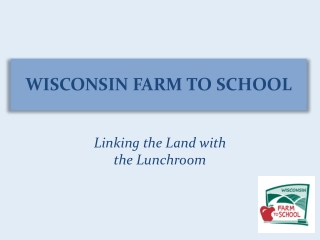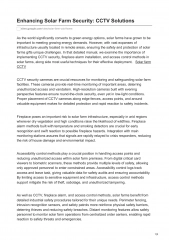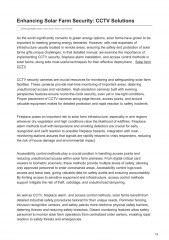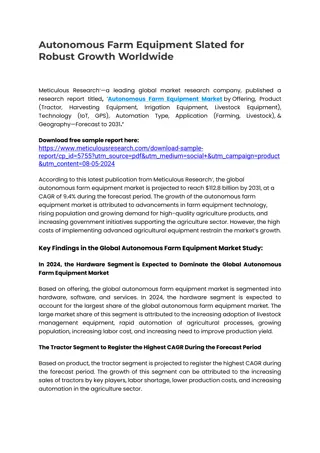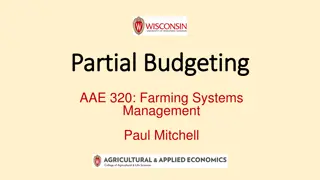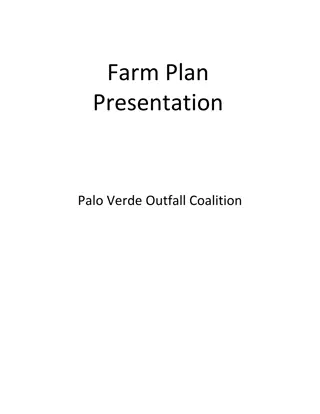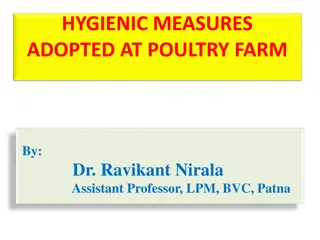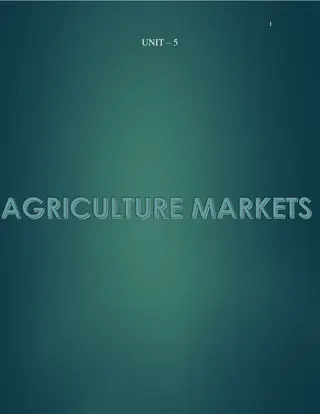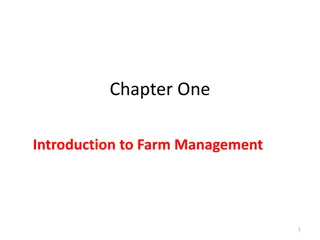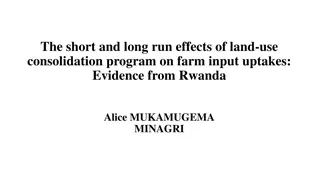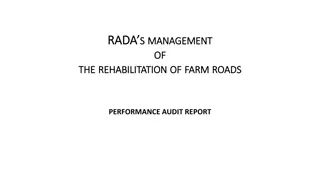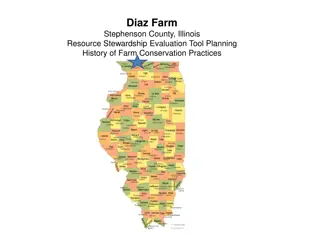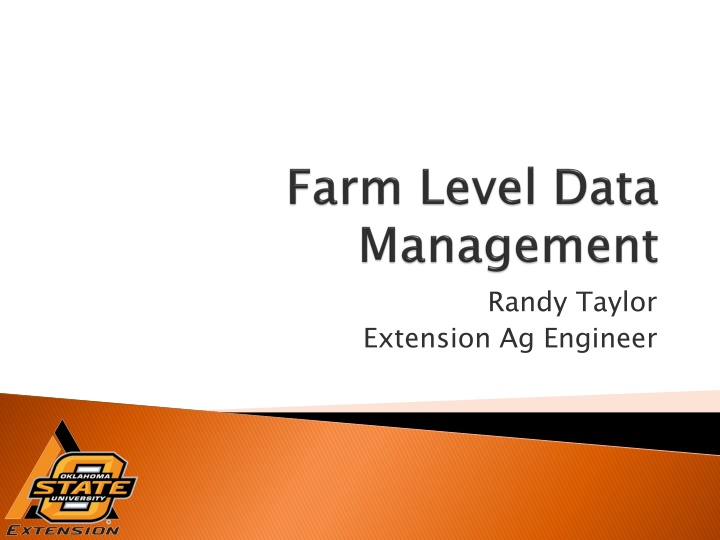
Enhancing Crop Production Efficiency Through Data-Driven Techniques
Explore how Randy Taylor, an Extension Ag Engineer, utilizes technology and data management to optimize crop production. Discover insights on yield optimization, no-till corn planting, and multivariate linear regression analysis for better decision-making in agriculture.
Download Presentation

Please find below an Image/Link to download the presentation.
The content on the website is provided AS IS for your information and personal use only. It may not be sold, licensed, or shared on other websites without obtaining consent from the author. If you encounter any issues during the download, it is possible that the publisher has removed the file from their server.
You are allowed to download the files provided on this website for personal or commercial use, subject to the condition that they are used lawfully. All files are the property of their respective owners.
The content on the website is provided AS IS for your information and personal use only. It may not be sold, licensed, or shared on other websites without obtaining consent from the author.
E N D
Presentation Transcript
Randy Taylor Extension Ag Engineer
Crop production records Yield Field Operations Input Records Financial Records Revenues Expenses
While paper records are still important, we have a streamlined method for getting there. Technology adoption allows digital records to better manage inputs and equipment. Data Management can be the driver for agronomic and business decisions http://www.usfarmdata.com/Images_New/BannerImg4.png
No-till corn planted into soybean and wheat stubble Corn was planted from March 31 to April 22 There were 19 hybrids planted individually on at least 8 acres each. There were another 11 hybrid combinations planted through split planter trials on at least 11 acres each. The 36 fields used in this study were within a 9- mile radius Rainfall varied across the area The cooperators assigned ratings for rainfall (most, intermediate, and least rain) and soil rating (best, good, and poor) to each field
To determine if the time of day that corn was planted had an effect on yield It was the cooperator s observation that they were not getting good stands when they planted early in the day.
Data were mapped based on time of day that corn was planted 429 points were selected to represent the range of planting times across all 3 farms Yield, cooperator, hybrid, planting date and time, and rainfall and field ratings were extracted for each location (point)
Multivariate linear regression was used to evaluate the relationship between yield and all the known influencing parameters Yield was regressed as a function of, planting date, planting date squared, planting time, and planting time squared Other information was brought into the regression analysis through dummy variables Hybrids of interest and the rainfall and soil ratings
Dependent Variable: YIELD N: 429 Multiple R: 0.568 Squared multiple R: 0.322 Adjusted squared multiple R: 0.300 Standard error of estimate: 16.438
Effect Coefficient Std Error Std Coef Tolerance t P(2 Tail) Constant Day DaySQR Time TimeSQR 723.135 -12.238 0.059 3.430 -0.114 301.127 5.903 0.029 2.119 0.064 0.000 -3.323 3.277 0.611 -0.668 . 2.401 -2.073 2.061 1.619 -1.783 0.017 0.039 0.040 0.106 0.075 0.001 0.001 0.012 0.012 A12 6.690 10.240 -6.420 7.659 4.623 -7.335 19.561 4.611 3.323 3.365 3.047 3.467 2.698 2.774 0.065 0.199 -0.087 0.115 0.065 -0.128 0.489 0.825 0.391 0.783 0.785 0.681 0.740 0.340 1.451 3.081 -1.908 2.513 1.333 -2.719 7.051 0.148 0.002 0.057 0.012 0.183 0.007 0.000 K77K78 K61 G8366 G26G27 Mixed GoodRain MostRain GoodSoil BestSoil 26.220 5.576 4.661 2.923 2.732 2.527 0.665 0.132 0.119 0.298 0.390 0.396 8.970 2.041 1.844 0.000 0.042 0.066
Both the time and time-squared variables were significant in the regression Based on the regression, the cooperators lost about 4 bu/ac in yield when planting at 9 AM as compared to planting at noon. Though this penalty for planting earlier in the day is not great, it does give the cooperators a real value to use in the decision making process. Furthermore, if this occurrence is observed in future years, it this analysis could lead to improved machinery management decisions.
164 162 Yield, bu/ac 160 158 156 154 6 9 12 15 18 21 24 Time of Day Corn was Planted Regression Reality?
Though this penalty for planting earlier in the day is not great, it does give the cooperators a real value to use in the decision making process. Furthermore, if this occurrence is observed in future years, it this analysis could lead to improved machinery management decisions.
Farm Average 4.2 Regression Acres Hybrid 6.7 79 31A12 -6.4 -2.9 32K61 265 4.6 217 0.5 33G26/G27 488 10.2 17.0 34K77/K78 302 7.7 3.5 8366 Yields are relative to the base hybrid.
Regression analysis showed that 34K77/K78 was 10.2 bu/ac better than 3237, whereas the whole farm average indicated it yielded 17.0 bu/ac more. However, the whole farm averages do not account for the different planting dates and growing conditions. 3237 was planted in fields that received minimal rain.
Of the 58 observations in the point data for 3237, 23 were associated with the least rainfall condition and no observations for 34K77/K78 were found in the least rainfall category. More than a third of the low rainfall observations were associated with 3237.
Regression analysis explained over 30% of the yield variability with minimal (?) factors Regression provided better hybrid analysis than farm averages
A data logger coupled with a GPS receiver lets us create application maps. Allows us to record (automatically) what we are doing in the field. Now we know where the proverbial check strip is located. Furthermore with wireless technology, data is transferred automatically to the cloud and becomes accessible anywhere.
Automatic wireless data transfer Help getting started in data management with local support and training Simplified Ag software with preference on web-based. Results from 2012/2013 Alabama Precision Ag Survey of Midwestern and Southern Farmers
Technology Ag Data Management Organizing / Visualization Analytics Crop Insurance http://t0.gstatic.com/images?q=tbn:ANd9GcTkve9YEY01ygNSM4NDNxeDN4XFtDX7Yv9wvd7qLB0308LzVE1ryQ Sustainability movement http://t0.gstatic.com/images?q=tbn:ANd9GcSsKtCoqmk-tsbq-pz0f4If-m7xtDfKfeNAIrCg-6ay2URC_dS5 Images courtesy of the different companies.
Farmer / Primary Farm Manager owns the data. Ownership vs. Licensing Data streams and connectivity Machine, agronomy, etc. Data flowing between company databases / clouds Remote sensed imagery who owns? Policy development IA and other groups working on policy
Ownership is not the concern the farm or primary farm operator OWNS the data as view by 99.9% out there. The concern comes with the User License What does it mean? How can it be used? Is it an exclusive license? Who can touch access the data? As data moves between servers, does personal information (name, field ID, GPS points) go with it so it can be linked back to the source?
Who owns remote sensed imagery? Can someone fly a drone across your field? Does a drone really matter, it the same information is available from satellites? New camera technology is being commercialized which may be able to provide the user with more information than might be expected So as a farmer, companies may not need your data since they can collect through remote imagery and other online intelligence systems.
Industry partnerships Trusted representative which provides personalized solutions. Consider the equipment technology - service you purchase (work together?) Terms & Conditions related to data (read) Exclusive license? If I decide to leave, what happens? Be engaged (if you want a choice be engaged) At least one company is considering a Growers Bill of Rights.
There is talk but little presence by famers in the area of data privacy. Farm Bureau made their announcement a couple weeks back that may influence Terms and Conditions a little, but more effort is needed now as services are being deployed. The service sounds great but in the meantime a company may get to see a lot of the business side! What happens when the real players get involved (i.e. Google, etc.)?
Companies collect demographics and shopping patterns Retail discount cards Credit cards Some people will gladly share their demographics for a small discount on purchases Is your individual data valuable (i.e. do they really care what I buy as an individual)? Probably not without the database
The data has the most value to you. A database is only as valuable as the data it contains. Data integrity is critical Is your farm level data valuable to someone else? Probably not without the rest of the database Large datasets are necessary to make wide scale inferences Do you get value from the database?
Can you make better (i.e. more informed) decisions? Can you make inferences from one year s data for future decisions? Do you have enough data to make good decisions? Acknowledgements: John Fulton, Auburn University and Jeremy Wilson, Crop IMS provided material for this presentation.

